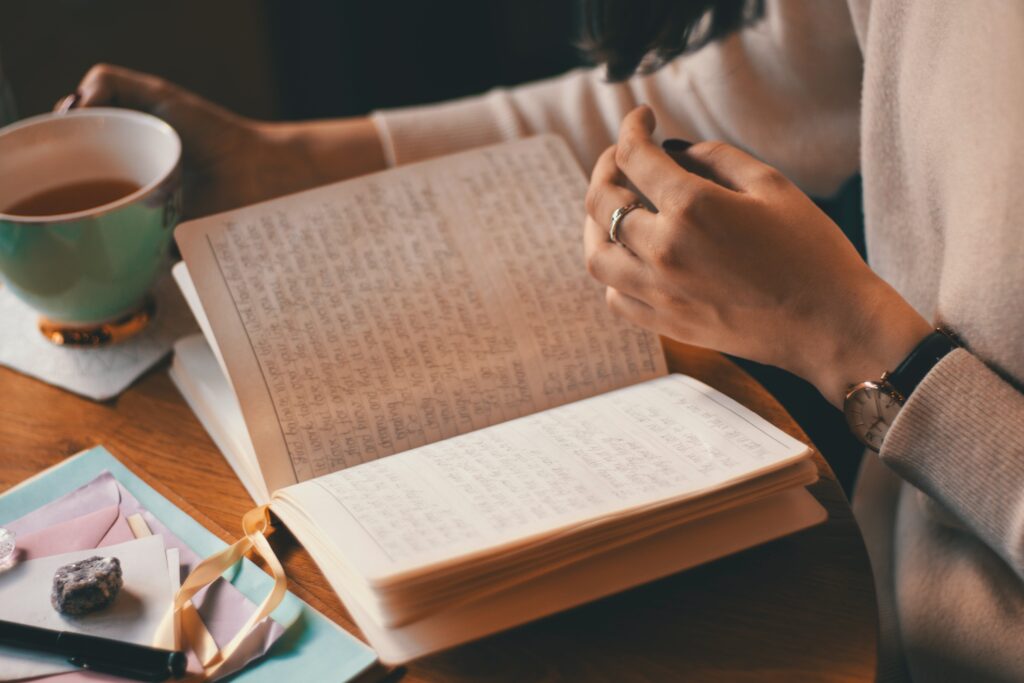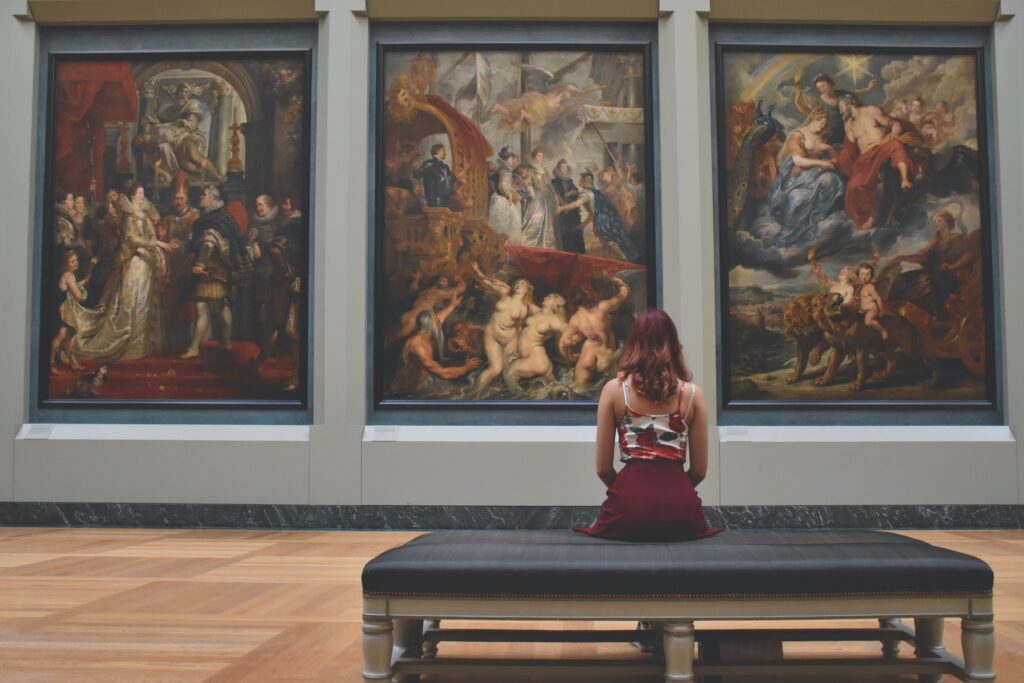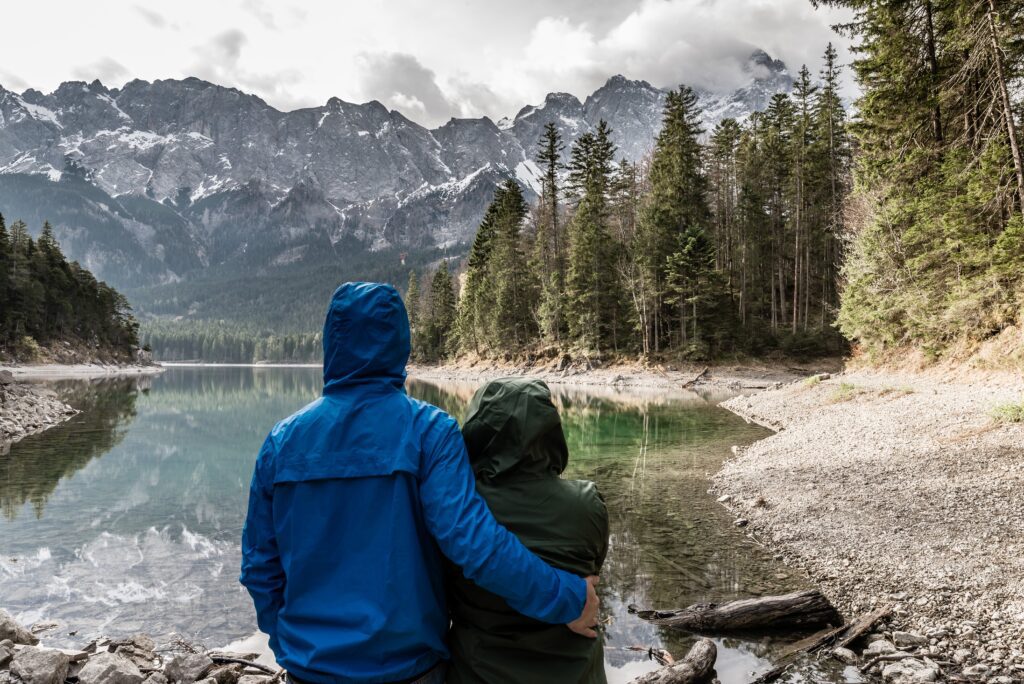If you’re a filmmaker, writer, or artist of any kind, you probably think about finding inspiration a fair amount. I know I do. When I was younger, I thought of inspiration as something I had to chase, and I felt like a failure if none of my ideas excited me, or worse, I didn’t have any ideas at all. During creative dry spells, I felt like I was constantly searching for my muse, wondering why inspiration didn’t hit me like a lightning bolt out of the sky. I was certain that was what was happening to all the other creatives I admired. Now that I’m a little bit older and wiser, I think of inspiration as something that happens to me, not something that I create. Sometimes people ask me where I find inspiration, and I don’t have one good answer for them. I’ve written novels because I was inspired by a location (the botanical gardens) or a word I’d heard a million times before (the word flotsam literally spawned an entire book in my head). I’ve been inspired to write screenplays because of what I was wrestling with in my personal life (the death of a loved one) or because of specific goals I had in mind (like writing a short horror script for a screenwriting contest). Some of these moments have had that amazing, lightning bolt, sent from the Gods type of feeling. Some of these have been ideas I’ve mulled over for weeks, months, or years before I was ready to put pen to paper. I think this is a more realistic picture of what finding inspiration looks like for most people. While I’m positive there are outliers, a lot of us are just making it all up as we go along, looking for inspiration as we go.
Okay, so, if finding inspiration isn’t something we can magically make happen, why am I writing a whole article about finding it? Well, as much as I believe inspiration is something that happens to you, I do think you can cultivate it. Like so much of the artistic process, there are aspects that are outside of your control, but that doesn’t mean you can’t maximize your chances of being struck out of nowhere by that amazing, inspired feeling… or that you can’t develop strategies to help you turn the seed of an idea into something beautiful.
Let’s dive in and look at three of my favorite ways of finding inspiration.

Consume other art.
Let’s start with the most obvious thing first: if you’re going to be a writer or filmmaker, you need to be reading and watching things in the genre and category you want to be working in. Pretty simple! When I’m getting ready to write a middle grade novel, I read other middle grade novels. When I’m trying to write a horror screenplay, I queue up some horror movies that are potentially similar to what I want to accomplish. Who hasn’t consumed a piece of media and found themselves thinking about what they might have done differently, what they thought was brilliant, and maybe even feeling a twinge of jealousy that they didn’t think of that themselves? All of these thoughts and feelings can be channeled into inspiration. I once read a book that I thought had a gorgeous concept and inspiring prose, but I thought the plot was a little simplistic and the characters were slightly underdeveloped. I mulled it over for a long time and ended up writing a piece that echoed the things I loved about the book, but also addressed the problems I saw with it. It goes without saying you should never copy or duplicate another artist’s work, but there is no problem with finding inspiration in it and putting your own twist on it. Maybe you love Greta Gerwig, or Ari Aster, or Steve McQueen. If there’s a person (a director, a screenwriter, a cinematographer, anyone) who inspires you, take the time to watch or rewatch their work and the work of their contemporaries. If you’re writing a screenplay, pay careful attention to the script, or find screenplays that you can read for free online.
You can also take this a step further and look for inspiration outside of your niche. I once wrote a book that was inspired by my favorite TV show (it was Lost, don’t come for me). Maybe a Taylor Swift song can be the jumping off point for your next movie because even though you could never afford it it would just be too perfect for the opening montage. Maybe a painting evokes a feeling in you that you want to turn into a poem, or a poem gives you a spark of inspiration to write a short story. Even art that doesn’t give you an idea for a specific project makes you a better artist. Basically, if you want to create, you also need to consume. Think of consuming art like being your diet as an artist. Just like you shouldn’t run a marathon without fueling up first, you shouldn’t try to force yourself to create when you’re creatively starving.
Let’s talk about the ugly side of consuming other people’s art: jealousy. I know I’m not alone in the fact that sometimes I’ll read a book, watch a movie, or listen to a song that leaves me feeling jealous that I didn’t create it. Often, that goes along with a deep fear that I’ll never create something that good. Sometimes that means I avoid revisiting that art (I once didn’t listen to Hozier’s album Unreal Unearth for several weeks because I was so jealous of his way with words, and anyone who knows me knows that this is a major deal) but I want you to resist that urge. Instead of avoiding the thing that makes you jealous, I want you to think about what is driving that jealousy. Don’t just say “it’s really good,” dive deeper than that. For me, what was making me jealous of Hozier was that he is capable of evoking such strong emotions through his beautiful use of language. Once you’ve identified why you’re struggling with jealousy, take it a step further and see how you can work on that particular skill. My jealous feelings told me I needed to focus more on my prose in order to become the type of writer I wanted to be, so now that’s one of my top considerations when sitting down to write.
Write down the things that inspire you or make you jealous and revisit them when you are feeling unmoored. It might not instantly give you the idea you are searching for, but it will certainly leave you more capable of finding inspiration.

Spend time in nature.
This one is a cliche, but it’s a cliche for a good reason! Even if you’re not an outdoorsy person, there is nothing like getting in nature to help you find inspiration. There’s a lot of reasons for this; more often than not, you’re moving your body, which always helps generate ideas (I’m literally walking on a walking pad as I write this). You’re also experiencing new sights, sounds, and sensations, even if you’re just at the park by your house that you’ve been to a million times. Nature is always changing, minute to minute and season to season. What’s so great about nature is that even if it’s not really your “thing” you can still find enjoyable ways to experience it. I’m not going to force you to sleep in a tent, I swear. Here are some experiences I’ve had in nature that have inspired me: walking through coffee fields in Costa Rica during the rainy season, hiking through Sabino Canyon in Arizona, driving through the Badlands looking for mountain goats while blasting Bruce Springsteen (obvs), sitting next to the Eno River in North Carolina, bird watching in my own backyard. Some of these things are more accessible than others, both physically and financially, but regardless of your context, I promise you can find ways to get into nature that work for you. Regardless of if you’re spending a day relaxing on a remote island, walking through Central Park to get to work, or even tending to your singular, ill-fated houseplant, find a way to shake up your routine by experiencing nature and see if that helps you towards finding inspiration. Here is a quick list of ways you can experience nature without getting on a plane or spending a bunch of money. Maybe one or more of these will work for you.
- Buy a small, low-maintenance plant (I like pothos, they’re cheap and hard to kill) and put it on your desk where you’ll see it daily. Notice the way it changes and grows; the way its leaves droop when it needs to be watered, the way parts of it yellow or turn brown, what it looks like when a new leaf is about to grow.
- Spend 10 minutes of your lunch break sitting outside. Bring a notepad and jot down everything you see.
- When the weather permits, choose to sit on the patio of a restaurant or coffee shop. Bonus points if you can see a tree from where you’re sitting.
- If you commute, see if you can take back roads for part of your drive and look at the foliage (or bare trees, depending on the season). Do this a few times a year and notice the way the trees change, the plants you see on the side of the road, and any animals you see.
- Check out alltrails.com and find a trail near you that works for your needs (time constraints, fitness level, accessibility requirements, etc) and go for a walk on your next day off. Walk or hike slowly and really pay attention to your surroundings. For bonus points, take pictures of anything interesting, unusual, or inspiring you see.
- Plan a picnic in the park with your bffs. Really try to relax and enjoy the time with friends, while noticing the sensory experience of eating outside; what does the wind feel like on your skin, what does the sunshine feel like, run your hand over the grass and take inventory of the sensation.
- Depending on where you live, see if you can visit a body of water; a lake, ocean, or river is always great for inspo.
- Play nature sounds on your phone while you meditate or work. I personally like rain sounds, but choose whatever you find soothing!

Live your life.
I’ve written before about how taking a break can (and should) be a part of your artistic process, but this goes way beyond that. Your life should include so much more than your art, and should be full of people, places, and things that inspire you. So many filmmakers and other artists I know are total workaholics, and while I will never criticize anyone for having a solid work ethic, it’s important to allow yourself to actually live your life. Take stock of a few things.
- Relationships. Do the people in your life inspire you? Do you have people you admire, who help you with creative problem-solving, who make you think, who take your work seriously, who encourage you to have experiences that inspire you? Sometimes, a late night laughing with friends is more productive than a solo brainstorming session. An invigorating conversation about a topic that interests you might help you delve into that concept creatively. If you don’t have these types of support in your life, read my article about how to build a creative community. Cliff notes: you don’t need to only be hanging out exclusively with artists, you just need to feel supported and inspired by the people around you.
- Experiences. If there’s nothing going on in your life, it’s harder to actually create anything compelling. This ties back to my tips about getting out in nature and consuming more media; these experiences make you more well-rounded, which in turn makes finding inspiration easier. I have felt more inspired at certain concerts (cough, Hozier again, cough) than I have in some creative writing courses. My non-art related hobbies, like thrift shopping, push me to be creative in a different way (like can I actually make this cool 90’s grandpa sweater work?) and spend time with myself in a low-pressure way. Skincare and meditation force me to sit with my own thoughts, which often contain the seeds of inspiration. Travel lets me see the world from a new perspective. Think about the things in your life that make you feel good or inspired (no judgment if it’s binging TV, I’m rewatching all of Taskmaster for the third time at the moment) and then do more of those things.
- Your environment. Everyone is affected by their environment to differing degrees, but we’re all impacted by it at least a little bit. I personally do best in a space I find beautiful and relaxing; my home is my haven because I’ve specifically designed it to be so. It’s full of colors, plants, light, art, and objects that I’m obsessed with. Depending on your living situation, you might not be able to fully customize your space, but think about little changes you can make. Things like plants, candles, thrifted art, or found objects like rocks or driftwood all serve to make your space more of your own. I’m not going to tell you your space always needs to be perfectly clean (that would be majorly hypocritical of me) but at the very least, you shouldn’t find it stressful or overwhelming. My favorite cleaning hack for my ADHD brain is to take one room at a time and see how far I can get while listening to All Too Well (10 minute version). You’d be amazed by what you can get done in just a few minutes. I know I’m pretty extra in this specific department (my home office is painted entirely pink, including the ceiling, and I have a butterfly chandelier in there) but you certainly don’t have to go that far. Just make sure there is something in your space that you find aesthetically pleasing, and that it’s not so messy that it stresses you out.

There we have it, my top three ways to help you as you work towards finding inspiration. I want you to remember that everyone goes through dry spells (even Hozier, I bet) and not all inspiration feels like a lighting bolt from the sky. Take note of the things that inspire you, that make you feel more well-rounded, that bring you joy, and try to experience more of those things. When you have a seed of an idea, sit with it but don’t try to force it; you’d be amazed what going for a walk or journaling about something can help you accomplish. Finding inspiration is a lifelong journey. Good luck, and hit me up if any of these ideas resonated with you or if you have a different technique I should have included!

Leave a Reply